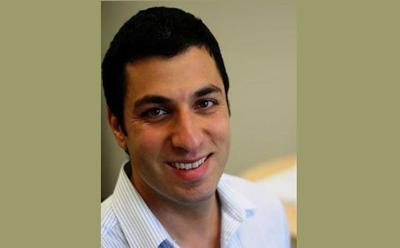New study shows click chemistry could provide total chemical dna synthesis

An interdisciplinary study led by Dr Ali Tavassoli, a Reader in chemical biology at the University of Southampton and member of the Institute for Life Sciences, has shown for the first time that ‘click chemistry’ can be used to assemble DNA that is functional in human cells, which paves the way for a purely chemical method for gene synthesis.
Writing in Angewandte Chemie International Edition Dr Tavassoli's team and his collaborators Dr Jeremy Blaydes and Professor Tom Brown show that human cells can still read through strands of DNA correctly despite being stitched together using a linker not found in nature.
The artificially linked DNA was created by joining oligonucleotides using click chemistry - chemistry tailored to mimic nature which generates substances quickly and reliably by joining small units together.
This click technique is highly efficient and boasts a number of advantages over the usual approaches to assembling DNA strands in the lab using a combination of DNA synthesis, PCR amplification and enzymatic ligation.
"As chemists we always sought to synthesise long strands of DNA but have been limited by our assumption that the phosphodiester bond is necessary for DNA to function in cells," says Dr Ali Tavassoli. The DNA backbone is made up of pentose sugars and phosphate groups that stitch the nucleotides together using phosphodiester bonds. This backbone acts as the scaffold for the four bases that make up the genetic code.
The click DNA approach relies on a rapid and efficient stitching together of modified DNA strands using the copper-catalysed alkyne-azide cycloaddition reaction. Click-linking DNA leaves behind a triazole group in the backbone and it was feared that cellular machinery would be unable to read these unnaturally joined DNA strands. The new study demonstrated error-free transcription in human cells, the first example of a non-natural DNA linker working correctly in eukaryotic cells.
"This is important because it shows that we don't have to stick to the phosphodiester backbone of the DNA at the site of DNA ligation," Dr Tavassoli explains. ‘This suggests that we can replace the enzymatic methods for DNA assembly and DNA ligation with highly efficient chemical reactions."
"This is a mind blowing advance that demonstrates chemistry's power to manipulate nature's nature," comments Nobel laureate Barry Sharpless at the Scripps Research Institute, US, who first described the click chemistry process. "I only dreamed I'd get to see click chemistry do this in my lifetime. It is a marvellous achievement."
The project is part of a £1.8m strategic longer and larger (sLoLa) grant funded by the Biotechnology and Biological Sciences Research Council (BBSRC), entitled ‘Extending the boundaries of nucleic acid chemistry'.